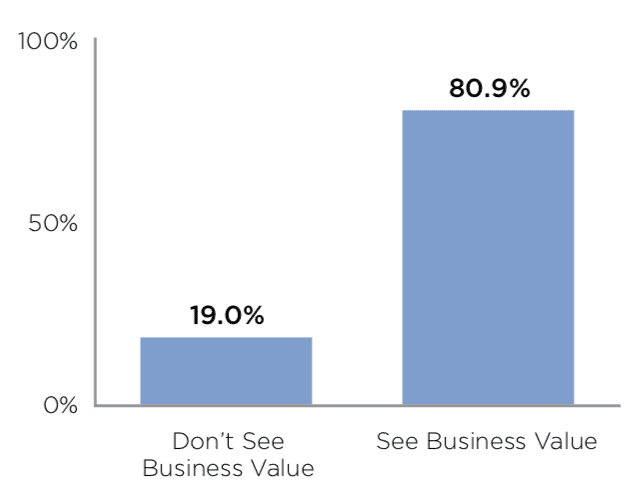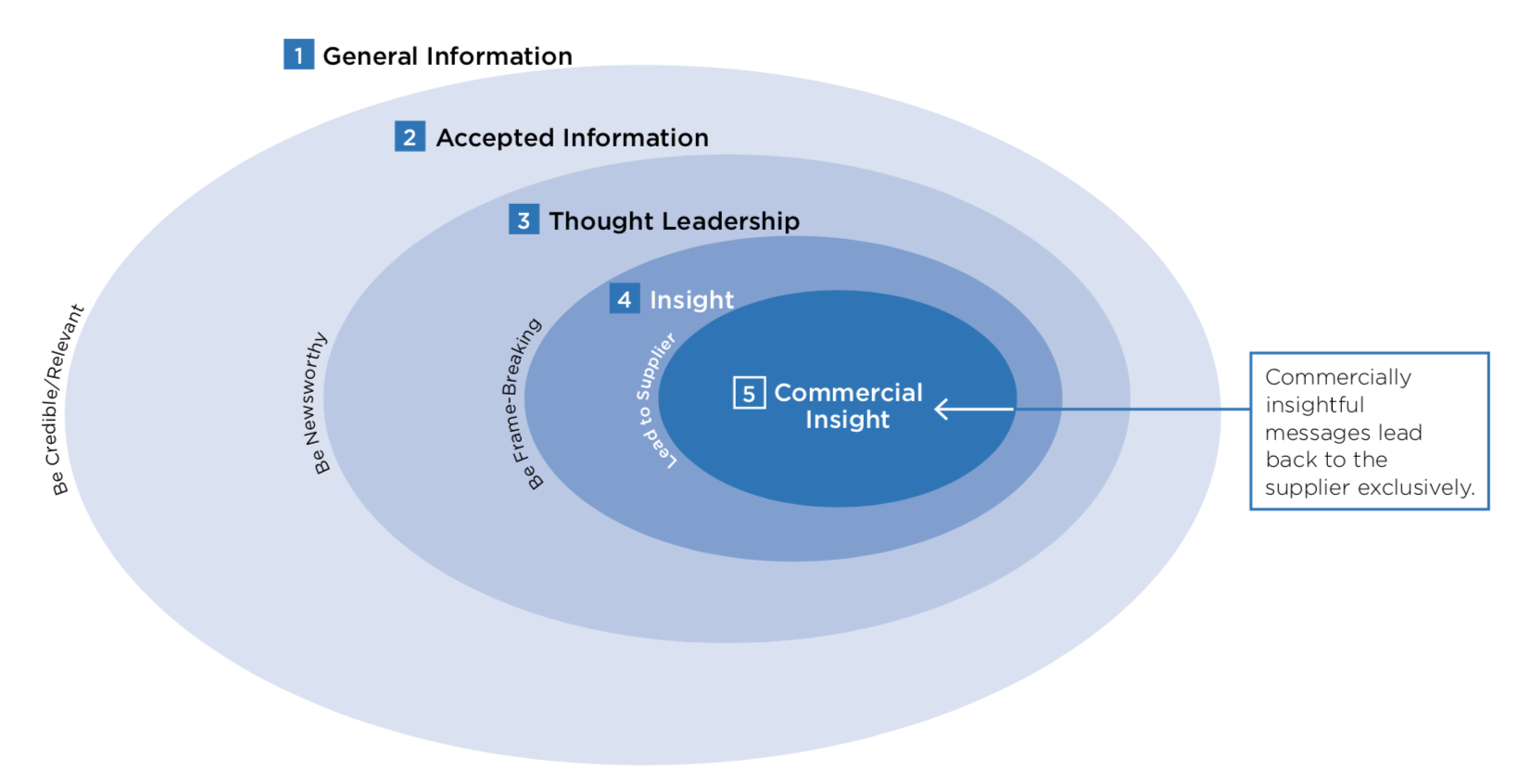So, although Nobel prize winner Kahnemann’s, Shiller’s and Thaler’s pioneering work in behavioral economics already proved this assumption wrong, this paradigm remained unintelligibly unquestioned over time. Moreover, those marketing professionals would have just needed to talk to any successful sales rep to understand the real drivers of B2B decision making, and that their theories on rational purchasing decisions are no more than that.
The absence of the homo oeconomicus
Now, there is new proof for it as CEB and Google teamed up to commission a study amongst 3.000 B2B buyers across 36 brands and 7 categories, producing some really interesting results (find the white paper including all results here).
Given the long-term paradigm and beliefs around B2B branding, the results should have proven the following:
- Branding and marketing don’t really matter as decisions are made purely based on facts
- Business value should be the key driver for any decision and based on those facts
- Personal value and emotions should not play any role in those decisions and neither need to be considered nor addressed
Interestingly, all of that conventional wisdom has been proven wrong by the results produced by CEB and Google.
Strong brand connections matter
Today’s B2B marketing environment is as crowded and competitive as for many B2C categories. This makes it more and more difficult for B2B brands to stand out from the crowd.
Historically, B2B suppliers used branding to establish a reputation for quality — to drive consideration and choice. Today, B2B customers typically identify the leading suppliers in a field and evaluate if any can meet their needs on their own through digital channels.
One way to address this challenge is to focus B2B branding and messaging on customers’ business outcomes to convey superior business value. As a result, quality features transform into proof points to support the benefit to the customer.
Figure 1: Impact of brand connection in B2B
Using business value to build stronger brand connections is a powerful way to drive preference, purchase, and premium pricing. The figure above shows clearly, how customers with strong connections to B2B brands have much higher rates of consideration, purchase, and willingness to pay a premium.
Moreover, if the business value is not understood, buyers are four times less likely to consider that brand. In other words, most buyers who don’t believe a brand will deliver business value simply won’t even consider purchasing from that brand at all.
Figure 2: Business value & consideration

Thus, business value has become a prerequisite for consideration. However, it’s not easy for B2B suppliers to identify and express business value to their customers. Why?
Business value is difficult to proof
Unfortunately, a B2B brands’ success in demonstrating business value has strong limitations. The reason is that business value perceptions often don’t really vary between brands, either within or even across industries. Different B2B suppliers offer almost the same products and services and superiority – or superior business value – is extremely hard to prove. This has a dramatic effect on the willingness of buyers to pay a premium.
Figure 3: Perceived business value, by category and brand

In summary, business value is not just difficult to prove, it has also become just table stakes. It gets B2B suppliers into a buyer’s consideration set but doesn’t make them stand out – buyers conclude that the top three leaders in an industry all deliver business value and are acceptable options. This inevitably leads to strong price competition where customers ultimately select the supplier willing to offer the lowest price.
So, neither a strong brand connection nor expressing business value will do the trick when you want to be successful in B2B marketing. They just give you permission to play. Which brings us back to behavioral economics, or what great salesmen intuitively understand and apply …
Personal value trumps business value
The most interesting finding of the research by CEB and Google is the following:
Personal value has twice the effect of business value across a broad range of commercial outcomes – and is the real reason and driver for why and how B2B decisions are made in the real world.
In the CEB and Google study those benefits were defined as follows:
Business value – includes appeals to logic/reason in areas such as:
- functional benefits (e.g., high performance, structure/order)
- business outcomes (e.g., achieving business goals)
Personal value – includes emotional appeals in areas such as:
- professional benefits (e.g. being a better leader, simplifying my life)
- social benefits (e.g. fitting in with colleagues, admiration from others)
- emotional benefits (e.g. confidence, excitement, happiness) and
- self-image benefits (e.g. pride, doing good for society, feeling of accomplishment)
To assess the relative impact of the two benefits categories, CEB and Google analyzed their lift on 14 commercial outcomes, including consideration, purchase, premium payment, and advocacy. The data shows that across the collection of commercial outcomes, personal value has twice as much impact as business value does. So, not only do emotions matter in B2B buying, but they actually matter more than logic and reason.
Figure 4: Impact of perceived benefits on commercial outcomes

This finding highlights a huge, in many cases untapped opportunity for B2B marketers to (re-)position their brand(s) around personal value, and tailor their messaging accordingly.
B2B buyers need to trust personal value
So, to really press the right buttons via your marketing and messaging, it is important to fully understand the drivers of personal value in B2B buying. One of the key reasons why purchase decisions in B2B buying are that personal – in fact, even more so than in B2C buying – is the level of personal risk buyers feel. Risks like losing time if a purchase decision goes poorly, losing credibility if buyers make a recommendation for an unsuccessful purchase, or losing their job if they are responsible for a failed purchase.
The more personal risks a purchase entails, the more emotional buyers feel and the more they attach to brands that can provide value and eliminate risk. Or, in other words, brands they trust (also see my article on ‘The Trust Equation’ here).
Unfortunately, yet easy to understand, it is easier to build trust in personal value with existing customers.
Figure 5: Business value & consideration

However, high levels of trust and an emotional connection among existing customers don‘t help with non-customers. When non-customers don’t see the personal value, they are over three times less likely to purchase and over seven times less likely to pay a premium. As a result, many B2Bs are successfully meeting existing customers’ personal needs, but they fail to convey those benefits to non-customers. That’s why it is important for B2B marketers to address this urgent opportunity and convince their non-customers of personal value too.
‘Commercial insight’ as the holy grail for messaging
In addition to emotional differentiation to win the buyer via personal value, suppliers must also ‘de-commoditize’ business value. To improve a buyer’s brand connection it is important to combine emotion and personal value approaches with opportunities to improve rational differentiation.
To do so, suppliers must first break down customers’ current behaviors and beliefs (e.g., satisfaction with a workaround or competitor’s solution) and then replace those beliefs with new ones that directly support the purchase. The strongest driver of such shifts is commercial insight: an understanding (as well as corresponding messages) that teach the customer something unexpected and new about their own business needs and challenges – ideally, exclusively leading back to the supplier. The following figure explains the messaging hierarchy:
Figure 5: Hierarchy of information conveyed through commercial messages

Commercial messages must pass through each level of the information hierarchy to be a candidate for the next, but many commercial messages fail at the first two stages. Successful thought leadership messages may teach customers something new but still fail to produce true insight if that teaching isn’t disrupting the customers’ buying criteria. Ultimately, commercial insight is the most potent of all commercial messages, as it challenges customers’ thinking about their own business problems and shows them that the status quo is no longer acceptable
Successful commercial insight disrupts customers
By leveraging commercial inside, customers learn something new about their business and thus appreciate the unique value in the supplier’s offer. Most commercial insight today is conveyed in business value terms, such as unexpected new ways to save the business money or generate returns for the organization. However, to maximize the impact of commercial insight, smart B2B marketers should also highlight the personal needs of all stakeholders involved to achieve both, emotional and rational differentiation.

